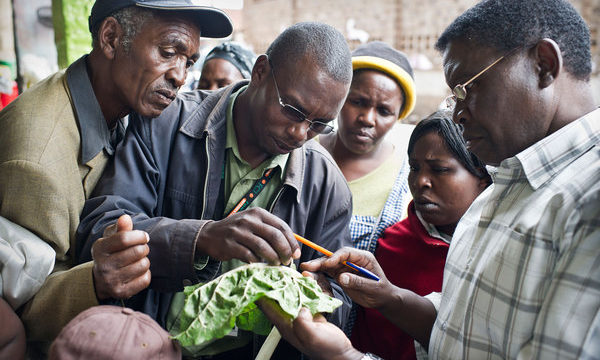
Image from Flickr, by Michael Pennay
Bats are perhaps one of the best kept secrets of agricultural success. As nocturnal fliers they are often ‘out of sight, out of mind’, but insectivorous bats (Chiroptera) provide us with a natural, eco-friendly, and free pest control solution, saving North America alone an estimated $3.7 billion every year. Good news then? Not so much for bats. Habitat loss and fragmentation, land-use change and disease (to name just a few) are all putting bat populations under pressure, and many are reaching breaking point.
There are approximately 1,200 species of bats found around the world, many of which feed almost entirely on insects. A swarm of feasting pests over a crop makes an easy meal, and in this way bats save us billions, increasing yields and reducing the need for pesticides. Not only this, but bats also act as pollinators, seed dispersers, and even produce soil fertilizing guano. While insects can become resistant to pesticides, natural enemies can fight back. In fact, it has been said that 99% of potential crop pests could be constrained by natural ecosystems, and some estimates for the value of bats’ global contribution to pest control reach a whopping $1 trillion.
The reasons for the decline of bat populations varies, but include the fungal disease ‘white nose syndrome’, primarily a problem in North America; a lack of roosting space, as old buildings are pulled down and natural roosts like trees cut down; and fewer available feeding areas. But one of the biggest obstacles faced by conservationists is that bats have a bit of an image problem. Chiroptophobia (a fear of bats) means that many are unwilling to accept they are an economically and environmentally important species in need of help. The Bat Conservation Trust has even launched a campaign to give bats a make-over after the number of bat crimes increased again last year. So, if you want to do your bit for crop protection and food security, it’s time to befriend bats.
Still not convinced? Here’s 5 reasons why we should give bats a break:
1. They don’t just eat crop pests; they also eat disease-carrying mosquitoes, reducing the number that can infect people with life-threatening diseases like malaria.
2. Batman – a hero time and time again. Need I say more?
3. Interesting fact! Bats are the only mammals that can truly fly.
4. The bumblebee bat is the smallest mammal in the world, weighing just 2 grams – how can anyone not like that?
5. One bat can eat 4-8g insects every night – that means for every bat lost there are thousands more insects left to devour crops each night. In addition to their crop-protection services, bat-enhanced pollination and seed dispersal lead to the production of chewing gum, tequila, sisal, medicines, fibre, timber and many, many more commodity crops. Without bats, these would all have much lower yields and higher costs.
Additional sources (see more in text):
Boyles, J. G., Cryan, P. M., McCracken, G. F., Kunz, T. H., Economic Importance of Bats in Agriculture, Science, April 2011
Armaghan, S., Bats are not scary, winged mammals are nature’s pest exterminators, says scientist at Bronx Zoo, NY Daily News, 28 October 2011
Bats Worth Billions to Agriculture: Pest-control Services at Risk, USGS, 31 March 2011
1 Comment
Leave a Reply
Related News & Blogs
Benefit from free access to Crop Pest Management Course
Pests and diseases are among greatest challenges to food security. Around 40% of crops worldwide are lost to pests – putting the livelihoods of millions of smallholder farmers and global food security at risk. CABI is helping to mitigate these challeng…
1 October 2021




[…] can you guess what the “best kept secret of agricultural success” might be? Clue: nothing to do with those East Anglian boffins of the first […]